Major U.S. Storm With Peak Severe Weather/Excessive Rainfall Tomorrow in Northern Gulf States
04/09/2024, 6:00 am EDTFlooding Rains Russia’s Kurgan Region
04/15/2024, 6:04 am EDT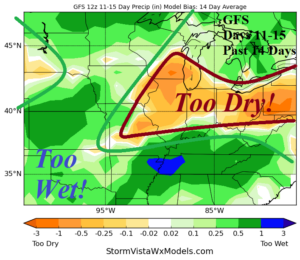

Fig. 1-2: The precipitation forecast bias/error in the U.S. AG Belt and Europe/Western Russia for the 11-15-day forecast during the past 2 weeks.
Discussion: During the past 14 days, the 11-15-day rainfall forecasts across the U.S. AG Belt and Europe/Western Russia have shown moderate to dramatic wet/dry bias. In the U.S., forecasts have been too wet across much of the Great Plains and Tennessee Valley (and vicinity) and too dry in the Midwest States (Fig. 1). In Europe, forecasts have not been as wet as reality across Western Europe and too wet in Southeast Europe to the Black Sea region (Fig. 2). In the U.S., the too dry forecast error makes more difficult projecting U.S. Corn Belt soil moisture conditions. Currently, the drought in the Midwest is easing based on April (so far) rainfall (Fig. 3-4) while dry soils intensify in the Missouri Valley and trend drier in Kansas/Oklahoma and Texas. During spring 2024, the Midwest drought should continue to erode while dry soil concerns shift southwestward as summer 2024 arrives. The concern in Southwest Russia to parts of the Black Sea region is consistent dryness (Fig. 5) coupled with forecasts recently too wet.

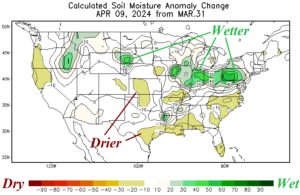

Fig. 3-5: U.S. daily soil moisture anomalies and change (so far) in April and the 30-day percent of normal precipitation analysis across Europe/Western Russia.
Current 15-day rainfall forecasts for the U.S. AG Belt reveal a drier trend most important over Iowa to Oklahoma (Fig. 6-7). In the Black Sea region, getting rain to the Southwest Russia dry zone is difficult as east-shifting rains across Europe stay mostly to the west (Fig. 8). The (GFS) rainfall forecast is generally drier than previously indicated (Fig. 9).
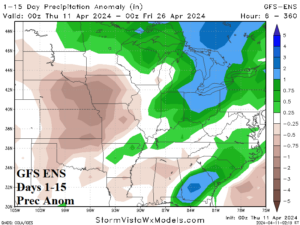
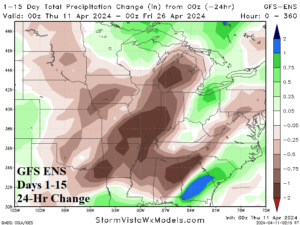
Fig. 6-7: GFS ENS 15-day precipitation anomaly forecast across the U.S. AG Belt and 24-hour change.

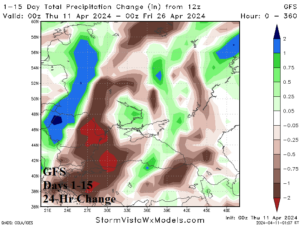
Fig. 8-9: GFS 15-day precipitation anomaly forecast for the Black Sea region and 24-hour change.
